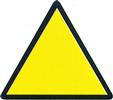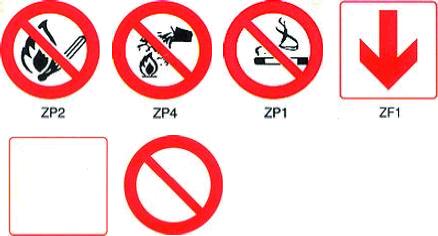

Introduction
Signs are used in buildings for imparting information to the occupants which is not obvious or apparent in any other way.
Safety signs are a particular type of such signs which are displayed for the purpose of maintaining the well-being of the occupants of the building. It is important therefore that occupants are aware of the meaning and purpose of the signs and interpret them consistently.
In the past, safety signs have been designed and produced for each building or building type and have differed widely. Often signs have contained words which some occupants are unable to understand either through illiteracy or unfamiliarity with the two official languages.
The need to co-ordinate their design in the interest of safety is apparent and nationally recognisable standard symbols desirable.
The International Standards Organisation, of which South Africa is a member, has published recommendations on the use of symbolic safety signs. With this information as the base, the South African Bureau of Standards has designed the range of safety signs that follow. These signs are recommended for use through the Republic.
The signs are divided into four categories. Each type is recognisable by colour and with one exception also by shape.

Colours
The colours shown in this document are only representative. The actual colours of the signs are to conform to SABS 1091 as shown in the table.

Positioning of signs
All safety signs must be placed where they can be easily seen and provide the best warning of the presence of a hazard. Generally they are best placed above eye level at a height above two metres. Obviously the sign should not be so placed as to create a hazard. To ensure that the sign is easily seen it may be necessary to place it at 90° to the passage or walkway.
In atmosphere that contains corrosive chemicals, thermoplastic signs should be used.

Fixing of signs
All signs that are not self supporting should be attached to flat surfaced or backing plates. The edges of the backing plate should not protrude beyond the edges of the sign. The sign may be framed but the frame should not dominate the sign and the visible area of the sign should conform to the sizes given above. For attaching the sign, galvanised nuts, bolts and washers should be used. In an atmosphere that contains corrosive chemicals, these nuts, bolts and washers should be coated. The colour of the heads of the rivets or bolts and nuts, should be the same as that part of the sign in which they are placed.
Suitable precautions should be taken to prevent the penetration of moisture into the joint between a metal sign and its support.

Lighting of signs
If a sign is not illuminated adequately by means of natural lighting or the building is occupied during the hours of darkness, artificial lighting should be provided.
Reference: Fire Protection Association of Southern Africa

© Technews Publishing (Pty) Ltd. | All Rights Reserved.